By now, you all know how I love reading sustainability reports. The sheer variety of approaches to reporting, content, presentation, design, quality and creativity is as great as the number of companies which report. Sustainability reporting has become a true differentiator and not only because of a report's existence (which is now, for the larger companies at least, is at "license to operate" level) but also because of the way a company reports.
A while back (in 2009), I posted tips on How to Read Sustainability Reports , and these remain valid today. A quick refresher:
- Start with an open mind : don't let prior impressions of the company color an open-minded impression of the report content.
- People write reports, not companies : remember that people are always doing their best.
- Read the opening remarks by the Big Chief : the CEO sets the tone for what's in the report.
- Choose how you read : decide if you want to read bestseller-style or pickn'mix.
- Seek materiality : check out if the company has reported on the most important issues.
- Be copy-paste and delete aware : how much info is fresh.
- Look for consistency (and inconsistency) in data : does it all add up?
- Give feedback, ask questions, make comments, get engaged : help them make it better.
- Give some leeway to first timers : the first is always the toughest.
- Always eat ice cream when reading reports : OK, I didn't say this, but I meant it.
These days, I am reading and reviewing more reports than ever, and getting more feedback than ever from companies whose reports I review. Last month, I started writing an exclusive series of in-depth report reviews for the Sustainable Business Forum under the title: Reporting: how they do it. In this series, I go beyond a short overview and go for the jugular, aiming to bring out the best and less-best practices of a range of corporate sustainability reports while opening up some avenues for further exploration. It's easy to make a bad report good. It's less easy to make a great report outstanding. So, in addition to the 10 tips above, I will add some new ones, based on experiences of writing the How They Do It series:
Don't be fooled by diagrams, tables, images and charts : In my review of Showa Denko Group's 2011 CSR Report, I was challenged to find enough data of substance that would justify the presence of a host of charts and diagrams which give the impression of a highly structured approach to CSR. In the same way as this report claims to have "referenced" ISO26000 and other guidelines, without ever referring to them in the body of the report, I found that diagrams and charts were graphically interesting but left me wondering where the true data is hidden.
Follow the tough issues : Companies which report on how they are approaching sticky challenges, rather than just doing nice things, gain in credibility. In my review of Merck's 2010 Sustainability Report, I make the point that the company underwent a 17% downsizing following a merger with Schering Plough. This represents thousands of people which were laid off. While we can debate the responsibility of business in job creation, rather than job elimination, what is more important is the way a company manages downsizing. I would have expected to read quite a lot in the Merck report about this tough issue which I suspect took up significant amounts of management time in the reporting period, and affected the entire organization and external communities. Absence of disclosure begs questions and reduces credibility.
Examine how companies are setting targets : Sometimes targets can seem extremely challenging but when you take a look at the fine print, you realize that they may be less impressive than you thought. This is one point I mentioned in my review of Procter and Gamble's 2010 Sustainability Report. The company has a target to increase the proportion of Sustainable Innovation Products, having sold $40 billion of same during the past 3 years. Reading the fine print, I noticed that Sustainable Innovation Products fit the bill if they meet a 10% improvement in just one design parameter from a selection of energy, water, transportation, amount of material used and renewable energy or materials. Overall, such Sustainable Innovation Products appear to be a very low percentage of P&G's total sales, and a 10% improvement on one parameter per product seems to me to be rather a soft target. Sustainable Innovation sounds much more impressive than the fine print.
If a report wins an award, perhaps it deserves it : While there are many different approaches to reporting awards, and many ways to evaluate the quality of reports, perhaps those reports which actually surface to win a Reporting Award do deserve it. Such was my experience when reading and reviewing the De Beers 2010 Sustainability Report which recently won the ACCA South Africa Reporting Awards. In fact, I decided to review that report precisely because it won the award (wouldn't we all like to know the winning formula?). Without knowing which other reports were also-rans, I did find the De Beers report impressive on many counts and worthy of recognition. Maybe the Wisdom of Crowds (thanks, James) really does work.
Look at what a company is doing for its people: One of the things I found most impressive in my review of the Ferrero 2010 CSR Report was a strong heritage of family values which infuses the corporate culture in a way which respects and cares for people including a large group of retirees. Sustainability begins at home and rests on embedding a culture which supports employees becoming champions of sustainability actions and ambassadors of sustainability messages. If this doesn't happen, sustainability simply doesn't gel. Companies which devote energy to reporting extensively on sustainability-minded employee practices are ones which are apparently doing it right.
Check for impact : It's not enough to define material issues and not enough to describe what actions a company is taking to improve its own sustainability and that of the planet. A sustainability report should be about impacts, not just about actions. You are probably tired of hearing me say this. Almost all the reports I read and review are totally disproportionate in the amount of space used to recount activities versus space assigned to describing impacts. Almost all of them leave us guessing as to how a range of noble actions actually made a difference. This is not surprising. Assessing sustainability impact is not a task for the faint-hearted, and there is no single methodology that takes precedence. However, reporting is, in general, getting more professional and the better reporters are moving to a higher plane where stakeholder engagement, materiality analysis and impact evaluation are gaining ground. In my next piece in the Reporting: How They Do It series, I give an example of a truly excellent company with a strong report which covers a vast range of company activities in meticulous detail and with great authenticity, but falls short of describing impacts in most areas. Which company? Ha-Ha. Check back next week!
I daresay the above list of 16 tips is still not exhaustive. Reading sustainability reports does have its pitfalls (mainly because writing them has its pitfalls). However, every single report has value and careful reading both on and between the lines, combined with a healthy level of optimism, skepticism, criticism and icecreamism should help good reporters get better and better reporters get great :)
elaine cohen, CSR consultant, Sustainability Reporter, HR Professional, Ice Cream Addict. Author of CSR for HR: A necessary partnership for advancing responsible business practices Contact me via www.twitter.com/elainecohen on Twitter or via my business website www.b-yond.biz/en (BeyondBusiness, an inspired CSR consulting and Sustainability Reporting firm)



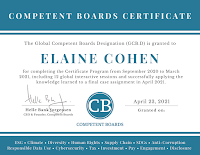


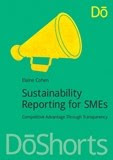
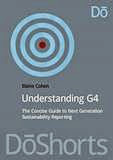
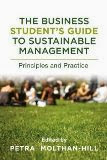
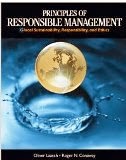
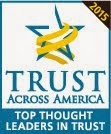









No comments:
Post a Comment